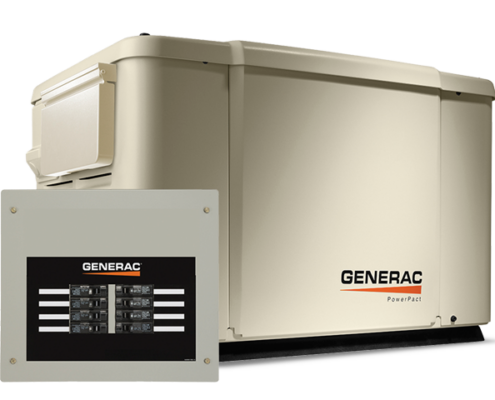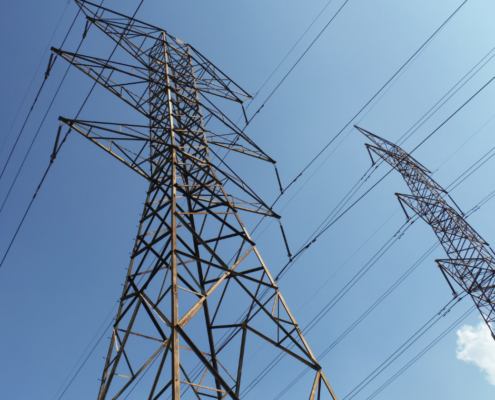Last Updated on May 1, 2023 by Mary Pressler
Electric Rates by State: 2023 vs 2022
The US Energy Information is constantly gathering the latest energy data, and this includes the electricity cost per kilowatt-hour (kWh) by state. It’s important to note that analyzing all this information takes time, and the latest data published is normally from a few months ago. As of April 2023, the latest kWh prices published by the US EIA are from January 2023, and they are also compared with those from 12 months earlier (January 2022).
The impact of inflation is evident across all states and business sectors, and this includes the electric power industry.
- Between January 2022 and January 2023, the average electricity price for US homeowners increased from 13.72 to 15.47 cents/kWh.
- This represents a 12.76% increase in kWh prices, which is twice the general inflation rate during the same 12-month period: a 6.4% increase in the US Consumer Price Index.
Electricity prices vary by state, and they depend on a combination of many factors. For example, Texas has below-average kWh prices thanks to the abundance of local resources, while states that depend on electricity and gas imports tend to have higher kWh prices.
Residential Electricity Rates in Each US State (2023)
The following table provides the latest state electricity prices per kWh reported by the EIA, from lowest to highest, comparing them with 12 months earlier. Electricity prices are up across the board, but the increase is more drastic in some states.
| US State | January 2023 Price (Cents/kWh) |
January 2022 Price (Cents/kWh) |
Increase / Decrease (% Change) |
| Nebraska | 9.35 | 9.43 | -0.85% |
| North Dakota | 9.91 | 9.44 | +4.98% |
| Wyoming | 10.28 | 10.28 | 0.00% |
| Washington | 10.48 | 9.92 | +5.65% |
| Idaho | 10.58 | 9.90 | +6.87% |
| Utah | 10.66 | 10.27 | +3.80% |
| Missouri | 10.73 | 10.06 | +6.66% |
| Montana | 10.73 | 10.67 | +0.56% |
| Oklahoma | 10.96 | 10.16 | +7.87% |
| South Dakota | 11.25 | 11.03 | +1.99% |
| Iowa | 11.30 | 10.97 | +3.01% |
| Arkansas | 11.42 | 10.33 | +10.55% |
| Louisiana | 11.94 | 11.20 | +6.61% |
| Oregon | 12.04 | 10.86 | +10.87% |
| Tennessee | 12.11 | 11.50 | +5.30% |
| Arizona | 12.62 | 12.37 | +2.02% |
| North Carolina | 12.67 | 10.88 | +16.45% |
| Kentucky | 12.68 | 11.93 | +6.29% |
| Georgia | 12.87 | 11.63 | +10.66% |
| Kansas | 12.97 | 12.52 | +3.59% |
| Minnesota | 13.08 | 12.71 | +2.91% |
| West Virginia | 13.09 | 11.95 | +9.54% |
| Mississippi | 13.18 | 11.48 | +14.81% |
| New Mexico | 13.53 | 13.11 | +3.20% |
| South Carolina | 13.99 | 12.73 | +9.90% |
| Virginia | 14.03 | 12.10 | +15.95% |
| Delaware | 14.18 | 12.24 | +15.85% |
| Texas | 14.18 | 12.28 | +15.47% |
| Colorado | 14.20 | 13.59 | +4.49% |
| Ohio | 14.31 | 12.53 | +14.21% |
| Alabama | 14.36 | 12.86 | +11.66% |
| District of Columbia | 14.91 | 13.23 | +12.70% |
| Florida | 15.01 | 13.36 | +12.35% |
| Indiana | 15.43 | 13.41 | +15.06% |
| Maryland | 15.87 | 13.41 | +18.34% |
| Illinois | 16.04 | 13.12 | +22.26% |
| Wisconsin | 16.05 | 14.81 | +8.37% |
| Nevada | 16.81 | 12.94 | +29.91% |
| New Jersey | 16.92 | 16.33 | +3.61% |
| Pennsylvania | 17.99 | 14.18 | +26.87% |
| Michigan | 17.99 | 17.11 | +5.14% |
| Vermont | 19.95 | 19.34 | +3.15% |
| Alaska | 21.90 | 22.09 | -0.86% |
| New York | 23.57 | 21.02 | +12.13% |
| Maine | 24.12 | 18.33 | +31.59% |
| California | 26.45 | 23.60 | +12.08% |
| Rhode Island | 28.96 | 23.56 | +22.92% |
| Connecticut | 30.24 | 22.29 | +35.67% |
| Massachusetts | 31.71 | 25.36 | +25.04% |
| New Hampshire | 31.72 | 21.27 | +49.13% |
| Hawaii | 44.96 | 37.61 | +19.54% |
| US Average | 15.47 | 13.72 | +12.76% |
As you can see in the table above, there are currently 9 states with an average electricity price above 20 cents/kWh.
- Connecticut, Massachusetts and New Hampshire surpassed 30 cents/kWh.
- Hawaii is approaching 45 cents/kWh.
- Texas is currently at 14.18 cents/kWh, which is 8.3% below the US average.
The 8 states listed below experienced the most drastic increase in residential electricity prices between January 2022 and January 2023. All these states suffered a kWh price hike of over 20 percent:
- New Hampshire (+49.13%)
- Connecticut (+35.67%)
- Maine (+31.59%)
- Nevada (+29.91%)
- Pennsylvania (+26.87%)
- Massachusetts (+25.04%)
- Rhode Island (+22.92%)
- Illinois (+22.26%)
There were only three states where the average electricity price decreased or remained constant in the same 12-month period:
- Alaska (-0.86%)
- Nebraska (-0.85%)
- Wyoming (0.00%)
Highest and Lowest Residential Rates per kWh
Currently, electricity prices vary dramatically depending on the state. For example, residential kWh prices in New Hampshire are 239% higher than in Nebraska. Electricity costs depend on a combination of several factors: state regulations, climate, geography, consumption habits, deregulation, local energy resources and the power generation mix all come into play.
In the following table, you can compare the five states with the highest and lowest electricity prices (based on the US EIA data available in April 2023):
| Highest Electricity Prices | Lowest Electricity Prices |
| 1) Hawaii = 44.96 cents/kWh
2) New Hampshire = 31.72 cents/kWh 3) Massachusetts = 31.71 cents/kWh 4) Connecticut = 30.24 cents/kWh 5) Rhode Island = 28.96 cents/kWh |
1) Nebraska = 9.35 cents/kWh
2) North Dakota = 9.91 cents/kWh 3) Wyoming = 10.28 cents/kWh 4) Washington = 10.48 cents/kWh 5) Idaho = 10.58 cents/kWh |
Commercial Electricity Rates in Each US State (2023)
In general, commercial energy consumers have access to lower kilowatt-hour prices compared with homeowners. In this case there are also important differences between states, as you can see in the table below:
| US State | January 2023 Price (Cents/kWh) |
January 2022 Price (Cents/kWh) |
Increase / Decrease (% Change) |
|
| 1 | Utah | 7.97 | 7.81 | +2.05% |
| 2 | Idaho | 8.19 | 7.80 | +5.00% |
| 3 | Nebraska | 8.48 | 8.42 | +0.71% |
| 4 | Missouri | 8.77 | 8.41 | +4.28% |
| 5 | Wyoming | 8.83 | 9.03 | -2.21% |
| 6 | Texas | 9.05 | 7.85 | +15.29% |
| 7 | Oklahoma | 9.09 | 8.78 | +3.53% |
| 8 | North Dakota | 9.15 | 8.77 | +4.33% |
| 9 | Iowa | 9.32 | 9.15 | +1.86% |
| 10 | South Dakota | 9.81 | 9.61 | +2.08% |
| 11 | Virginia | 9.96 | 8.56 | +16.36% |
| 12 | North Carolina | 10.02 | 7.92 | +26.52% |
| 13 | Arkansas | 10.09 | 9.11 | +10.76% |
| 14 | Washington | 10.13 | 9.41 | +7.65% |
| 15 | Oregon | 10.21 | 9.27 | +10.14% |
| 16 | Montana | 10.33 | 10.09 | +2.38% |
| 17 | Arizona | 10.49 | 9.99 | +5.01% |
| 18 | Ohio | 10.51 | 9.75 | +7.79% |
| 19 | New Mexico | 10.55 | 10.29 | +2.53% |
| 20 | West Virginia | 10.74 | 9.63 | +11.53% |
| 21 | Colorado | 11.05 | 10.47 | +5.54% |
| 22 | Minnesota | 11.22 | 11.03 | +1.72% |
| 23 | Kansas | 11.27 | 10.56 | +6.72% |
| 24 | Louisiana | 11.57 | 10.77 | +7.43% |
| 25 | South Carolina | 11.59 | 11.02 | +5.17% |
| 26 | Georgia | 11.67 | 10.93 | +6.77% |
| 27 | Nevada | 11.86 | 8.53 | +39.04% |
| 28 | Illinois | 11.87 | 9.81 | +21.00% |
| 29 | Pennsylvania | 12.02 | 9.60 | +25.21% |
| 30 | Delaware | 12.02 | 9.79 | +22.78% |
| 31 | Tennessee | 12.08 | 11.46 | +5.41% |
| 32 | Wisconsin | 12.15 | 11.31 | +7.43% |
| 33 | Kentucky | 12.24 | 11.31 | +8.22% |
| 34 | Florida | 12.30 | 10.73 | +14.63% |
| 35 | Mississippi | 13.17 | 11.34 | +16.14% |
| 36 | Michigan | 13.25 | 12.29 | +7.81% |
| 37 | Alabama | 13.41 | 12.47 | +7.54% |
| 38 | Indiana | 13.65 | 11.82 | +15.48% |
| 39 | New Jersey | 13.66 | 13.31 | +2.63% |
| 40 | Maryland | 14.64 | 11.73 | +24.81% |
| 41 | District of Columbia | 15.91 | 14.76 | +7.79% |
| 42 | Maine | 15.97 | 13.99 | +14.15% |
| 43 | Vermont | 17.34 | 16.97 | +2.18% |
| 44 | New York | 18.04 | 16.60 | +8.67% |
| 45 | Rhode Island | 19.22 | 17.63 | +9.02% |
| 46 | Alaska | 21.01 | 19.46 | +7.97% |
| 47 | Massachusetts | 21.08 | 19.56 | +7.77% |
| 48 | Connecticut | 21.36 | 17.68 | +20.81% |
| 49 | California | 21.99 | 18.53 | +18.67% |
| 50 | New Hampshire | 22.26 | 17.48 | +27.35% |
| 51 | Hawaii | 43.65 | 36.29 | +20.28% |
| US Average | 12.79 | 11.36 | +12.59% |
As you can see, commercial electricity rates are lower than residential prices across the US. The only exception is Washington DC, where the average commercial rate (15.91 cents/kWh) is higher than the residential rate (14.91 cents/kWh) by 6.5%. There are 11 states with average commercial rates below 10 cents/kWh, and only six states have average rates above 20 cents/kWh.
Between January 2022 and January 2023, commercial kWh prices increased the most in the 9 states listed below. All of them had a price hike of over 20 percent:
- Nevada (+39.04%)
- New Hampshire (+27.35%)
- North Carolina (+26.52%)
- Pennsylvania (+25.21%)
- Maryland (+24.81%)
- Delaware (+22.78%)
- Illinois (+21.00%)
- Connecticut (+20.81%)
- Hawaii (+20.28%)
Commercial kWh prices increased in all states except for Wyoming, where rates decreased by 2.21%.
New Hampshire and Utah have the highest and lowest commercial kWh prices among the 48 contiguous states, with a 179% difference. The following table compares the five states with highest and lowest commercial rates overall:
| Highest Electricity Prices | Lowest Electricity Prices |
| 1) Hawaii = 43.65 cents/kWh
2) New Hampshire = 22.26 cents/kWh 3) California = 21.99 cents/kWh 4) Connecticut = 21.36 cents/kWh 5) Massachusetts = 21.08 cents/kWh |
1) Utah = 7.97 cents/kWh
2) Idaho = 8.19 cents/kWh 3) Nebraska = 8.48 cents/kWh 4) Missouri = 8.77 cents/kWh 5) Wyoming = 8.83 cents/kWh |
Cities Within a Single State Can Have Different Electric Rates
Keep in mind these are average kWh prices, which means you can find electricity plans with higher or lower rates. Also consider that electricity prices not only vary across states, but also within the same state because of transmission and delivery costs.
For example, if you compare electricity plans from the same providers in Dallas-Fort Worth (Oncor service territory) and Houston (CenterPoint service territory), you will notice slight differences.










